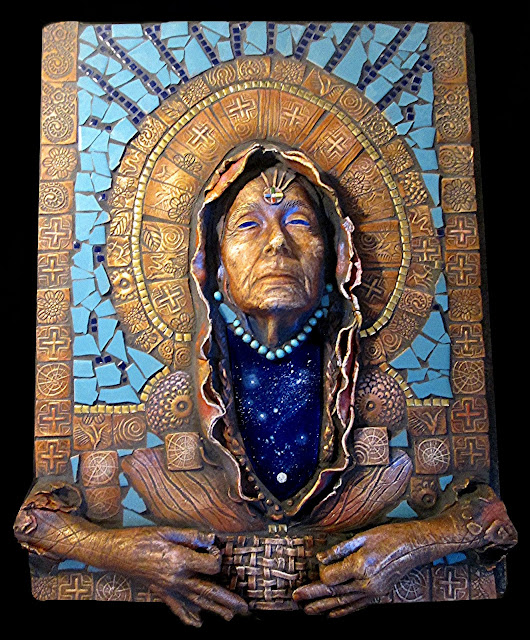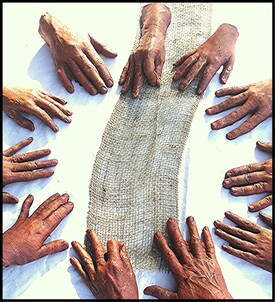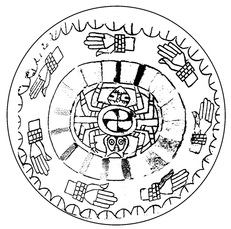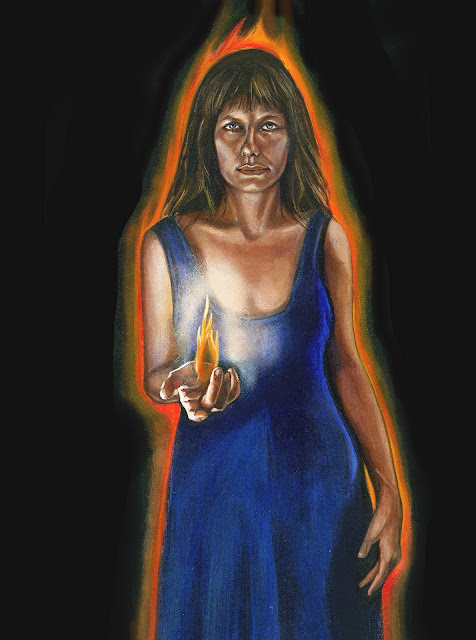And then, of course, because I no longer had a single copy of my (limited edition) book SPIDER WOMAN'S HANDS, I had to go back into the program and revise and add to the book so I can re-publish a new, better, updated copy! Which, I am also proud to say, is almost finished. It's not exactly a best seller, but the book is important to me, and archives and tells the story of my 5 year journey on the "Trail of Spider Woman". I think some of the stories (and art) in there is beautiful.
So much so that I am taking the liberty of copying below the article I did on Spider Woman from my website. I think I wrote it back in 2010 or so. Below also is a photo from a performance called "Spider Woman Speaks" in which Morgana Canady wove Spider Woman's Web with an audience of about 300. One of the most magical performances I have ever been privileged to participate in, from "Restoring the Balance" (2004).
Why is the Great Web, and this rather obscure but very ubiquitous Native American Deity important, especially for our time? Because She represents the interdependency, the essential Oneness of everything! She is timeless, a great archetypal Presence. This is the paradigm we, as a global humanity, need to evolve to.
Sometimes I feel like one of those crazy prophets, wandering around repeating myself over and over. Well, that's the problem with Visions and Visitations in a very fast paced world.......... you have to keep repeating yourself over and over, because they won't just go away. So any who may read this, forgive me for being repetitious. But it is my continuing truth and inspiration.................

“What might we see, how might we act, if we saw with a webbed vision? The world seen through a web of relationships…as delicate as spider’s silk, yet strong enough to hang a bridge on. " Catherine Keller, From a Broken Web (1989)
Pueblo mythology tells that when each of the 3 previous worlds ended, it was Spider Woman who led the people through the sipapu, the kiva (or birth canal) into the next world. Now, according to the Hopi calendar, a new age has once again begun. And surely, once again, Spider Woman, the midwife/creatrix has returned to point the way.
"We do not need to invent a ground of connectedness, but only to realize it. Inter-relatedness has been experientially grasped in myriad cultural contexts - yet the force of modernity continually denies and degrades it."Charlene Spretnak, The Politics of Women's Spirituality (1993)
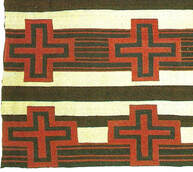
"The question is not so much "What do I learn from stories" as "What stories do I want to live?"David R. Loy, "The World is Made of Stories"
Spider Woman is ubiquitous throughout the Americas, found among the Maya, Pueblo and Navajo mythology, and among the pre-historic "Mound builders", the Mississippian cultures as well. There is evidence that the earliest Spider Woman was found among the Maya, where she is identified as the Earth Mother. I find this ancient myth a profound metaphor for our time, a symbol that can encompass ecology, community, theology, integral conciousness studies, and quantum physics.
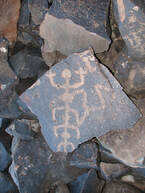
“Spider Woman was the first to weave. Her techniques and patterns have stood the test of time, or more properly, the test of timelessness – because they have always been present. It makes sense that one would follow the instructions of a deity who helped form the underlying structure of the world in which one lives...........Weaving is, from that perspective, not an act in which one creates something oneself – it is an act in which one uncovers a pattern that was already there.”
From her very being, the Spider spins silken, transparent threads that she organizes into the patterned symmetry of an ever-expanding Web. Tse Che Nako weaves, sharing this precious creative power with all of her Relations. With contemporary resonance, science now suggests that we live in a “thought universe” in which all forms of consciousness and living beings, as well as phenomena, are infinitely interconnected, interdependent, entangled, and responsive.
“Tse Che Nako, Thought-Woman, the Spider,is sitting in her room thinking of a story now -I'm telling you the story she is thinking. “
Keresan Pueblo proverb**
A spiritual paradigm is founded upon mythic roots. Following the metaphor theologian Katherine Keller has provided: if we can find models that allow us to vision our world as it really is – a shimmering web of interconnected relationships – if we can see truly the world "with a webbed vision”…….then how, indeed, might we act?
Some Navajos still rub a bit of spider web into the hands of newborn female babies so the they will be blessed by Spider Woman and become good weavers. May we all "rub a bit of Spider Web" into the palms of our hands as well as we set to the tasks before us.
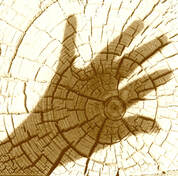
Loftin, John D.; Religion and Hopi Life, Second Edition, Indiana University Press, 2003
Loy, David: The World is Made of Stories, Wisdom Publications, 2010
Patterson-Rudolph, Carol: On the Trail of Spider Woman: Petroglyphs, Pictographs, and Myths of the Southwest, 1998, Ancient City Press (** quote from her book)
Spretnak, Charlene: The Politics of Women's Spirituality: Essays by Founding Mothers of the Movement, Edited by Charlene Spretnak, Anchor Books, 1982
